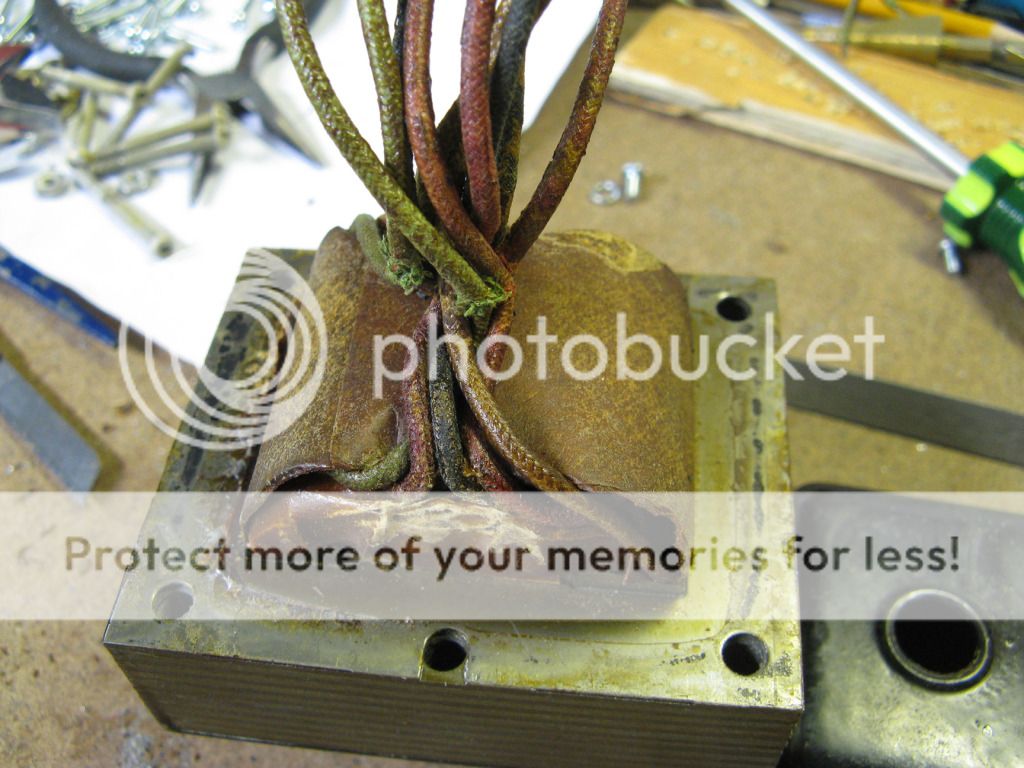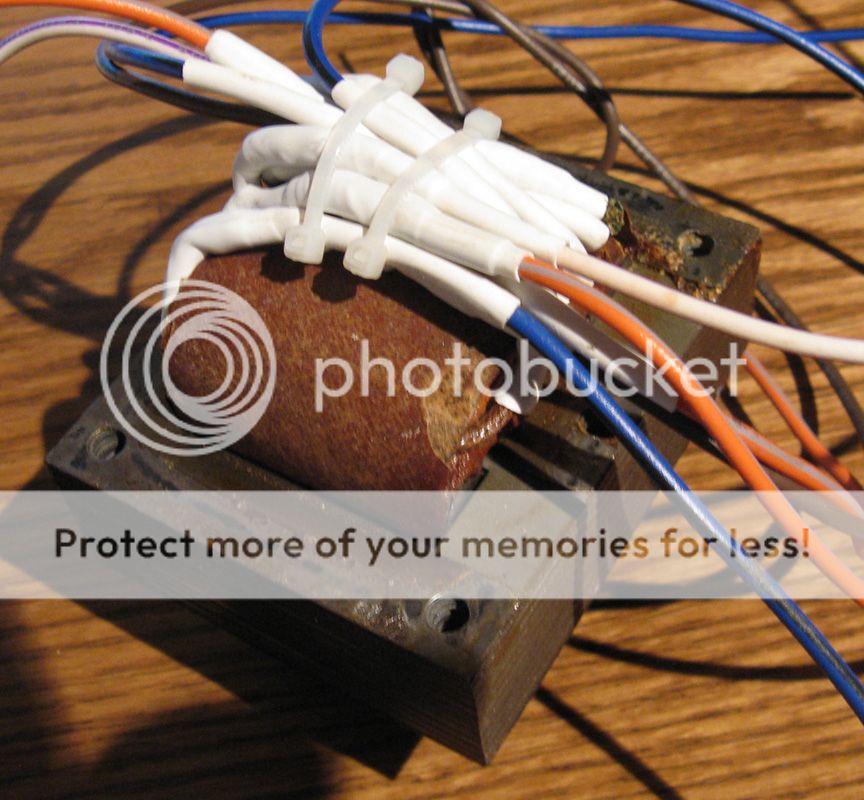The cloth insulation does deteriorate, with the passage of time. You can consolidate the old insulation with clear nail lacquer. However, the composite is quite stiff. Finish the repair by heat shrink encapsulation. Bending the wire will fracture the consolidated cloth, but the heat shrink saves the day.
The only way is to cut the outside paper wrap to get at where the winding is soldered to the original wire end. Then solder solder some nice flexable wire to replace the old ones. Original wire is so stiff, it's impossible to bend without damage. Try Gorillla duct tape to assemble. I think the original paper is covered in schalack, to glue it in place...
Don't think its that far gone yet. This one was.The only way is to cut the outside paper wrap to get at where the winding is soldered to the original wire end. Then solder solder some nice flexable wire to replace the old ones. Original wire is so stiff, it's impossible to bend without damage. Try Gorillla duct tape to assemble. I think the original paper is covered in schalack, to glue it in place...


One caution - watch the transformer voltage on the wires which you are covering with heatshrink.
Heatshrink insulation rating is often less than you expect.
If you don't know the voltage withstand rating of the stuff you are using then for the raw high voltage wires I would be using a double layer of heatshrink to ensure no nasty surprises. For guys here in Oz and other places where mains is 220 - 250V AC then I would probably do a double layer on the mains wires too.
Cheers,
Ian
Heatshrink insulation rating is often less than you expect.
If you don't know the voltage withstand rating of the stuff you are using then for the raw high voltage wires I would be using a double layer of heatshrink to ensure no nasty surprises. For guys here in Oz and other places where mains is 220 - 250V AC then I would probably do a double layer on the mains wires too.
Cheers,
Ian
OK, very nice. It's not a fun job, but it's done....DIY for sure!.. Are you gonna leave the Bell cover off?
That is a previous transformer, don't want to have to do it with the current one. Yeah, bell cover is off, not much room under it to begin with. I double shrink wrapped the joints just in case.
I played around with the new old transformer and I think I will be fine, no sharp corners though.
That is a previous transformer, don't want to have to do it with the current one. Yeah, bell cover is off, not much room under it to begin with. .
Looking at the before picture, it looks like that bell cover was below the chassis, so having no bell cover wouldn't be seen from above the chassis. You might get more hum leakage into the chassis circuits, but if you don't hear any, then it's not an issue.
- Status
- This old topic is closed. If you want to reopen this topic, contact a moderator using the "Report Post" button.
- Home
- Amplifiers
- Tubes / Valves
- Recycling old iron with stiff wires.
